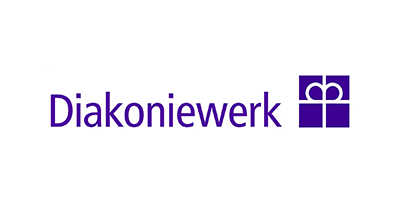Stiftung der Cellitinnen zur heiligen Maria
What was your starting point?
Two very time-consuming tasks prompted our decision to switch from preparing the consolidated financial statements at line-item level in Excel to using consolidation software.
Firstly, we've always produced consolidated financial statements for the ultimate parent company and for six subgroups every year. Though the seven sets of consolidated financial statements as at 31st December every year entailed a lot of work, they were still just about manageable. However, when our supervisory boards required quarterly consolidated financial statements too, the number of consolidated financial statements to be produced each year rose to 35. We no longer had the time to do all these in Excel.
Secondly, for certain external users of our financial statements, we provide a breakdown of various consolidated P&L items – another extremely time-consuming task in Excel.
What are your highlights?
Importing the annual and quarterly statements of the individual companies and the required consolidation postings to Corporate Planner takes a lot less time when compared with producing the consolidated financial statements in Excel.
The various consolidated P&L items can be subdivided for the external report users a lot more quickly in Corporate Planner, and there are far fewer errors than when these data were prepared in Excel. For instance, we've created sub-items for the sales in the group chart of accounts and linked the sales accounts directly to these sub-items so that the required evaluations are ready at the same time as the consolidated financial statements.
What lessons have you learned?
The most important lesson definitely is that the initial configuration of Corporate Planner is rather time-consuming and, when creating the group chart of accounts, it's better to make doubly sure you get it right first time so as not to go through the lengthy process again. One example is creating "normal" accounts, which are always assigned to the same item in debit and in credit, switching accounts, which are assigned to different items depending on their balance, and account groups, which are assigned to different items depending on the total balance of the accounts they contain.
When setting up Corporate Planner, extensive preparation work may be needed in the individual companies' source systems or financial accounting systems. This could include, say, applying a standardized definition of the facts recorded in particular accounts to all group companies, ensuring partner definitions are kept up to date, implementing all reclassifications and transfer postings from the audited financial statements in the financial accounting system as well, and using the same switching accounts or account groups for accounts of the same type.
About Stiftung der Cellitinnen zur heiligen Maria
The religious order of the Cellitinnen zur hl. Maria has existed in its present form since 1828. In the 19th and early 20th centuries, the nuns founded over 70 houses for social and charitable purposes, from The Hague in the province of South Holland to Assmannshausen in Hesse, Germany. Since the 1950s, the Cellitinnen had been experiencing difficulties in recruiting novices. To secure the future of their work, the management of their facilities was placed in secular hands in the 1990s, with the founding of Seniorenhaus GmbH der Cellitinnen zur hl. Maria in 1993, Hospitalvereinigung St. Marien GmbH in 1994, and Stiftung der Cellitinnen zur hl. Maria in 2003, which is now the legal entity for all the facilities. Today, a total of eight hospitals, two rehabilitation clinics, 19 elderly care homes and many other healthcare facilities and services belong to Stiftung der Cellitinnen zur hl. Maria. There are over 7,500 staff working for the foundation in the greater area of Cologne, Bonn, Aachen and Wuppertal.
"Producing 35 sets of consolidated financial statements per year was too much work in Excel. With Corporate Planner Cons, we've greatly reduced the time required and the error rate."
Martin Kurka
Group Accounting and Taxes




























.png?width=400&height=200&name=Zentrum-Ueberleben_400x200%20(1).png)









